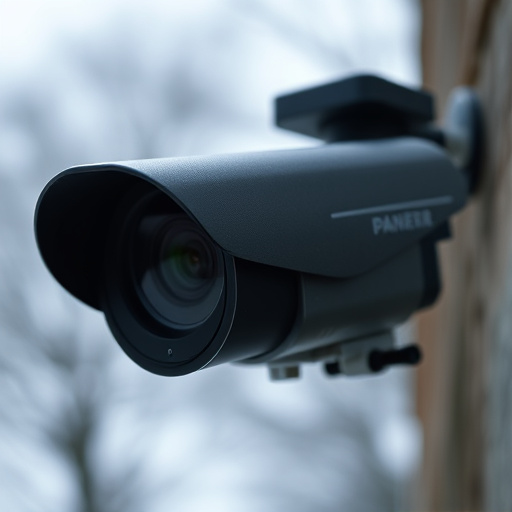Small hidden cameras in nurseries have advanced with HD video, night vision, and motion detection. Parents can remotely monitor their children using smartphones. Detection involves keen observation, regular checks, and specialized RF detectors that identify unique radio signals emitted by these cameras. RF technology scans frequency bands (300 MHz – 2.4 GHz) to uncover hidden cameras, especially in strategic locations like near windows or corners. A systematic approach including visual inspections and multiple detection methods is crucial for accurate results. RF detection devices are essential tools to maintain privacy in nursery environments.
Uncovering hidden cameras in nurseries is a growing concern, prompting parents and educators to arm themselves with knowledge. This comprehensive guide delves into the world of small hidden cameras and harnesses the power of radio frequency (RF) technology to detect these covert devices. We break down RF signals, offering practical steps and advanced tools to identify hidden cameras. Understanding these methods ensures nursery safety and privacy protection.
- Understanding Small Hidden Cameras in Nurseries
- Radio Frequency (RF) Technology Explained
- Detecting RF Signals from Hidden Cameras
- Practical Steps to Uncover Discreet Cameras
- Advanced Tools and Techniques for Camera Detection
Understanding Small Hidden Cameras in Nurseries
Small hidden cameras, often used in nurseries, have evolved into sophisticated yet discreet surveillance tools. These miniature devices pack advanced features such as HD video resolution, night vision capabilities, and motion detection, all packed into a compact form factor that can fit virtually unseen within nursery environments. Parents and caregivers can rest assured with real-time footage accessed through their smartphones, offering peace of mind while ensuring the safety and well-being of their children.
Detecting these small hidden cameras requires a combination of technological savvy and keen observation. Experts recommend regular checks for any suspicious devices, focusing on common hiding spots like corners, behind furniture, or in electrical outlets. Using specialized radio frequency (RF) detectors can also help identify hidden cameras that transmit data wirelessly. By staying vigilant and utilizing the right tools, individuals can maintain a safe and secure nursery environment.
Radio Frequency (RF) Technology Explained
Radio Frequency (RF) technology is a crucial component in detecting hidden cameras, especially those as small as nursery cameras. It operates on sending and receiving radio waves to detect signals emitted by electronic devices, including covert recording equipment. In the context of Small Hidden Cameras for Nursery environments, RF detection tools can identify these tiny cameras by picking up on their unique RF signatures, which are often used for data transmission.
By using specialized RF scanners, security professionals can scan a space for any hidden cameras operating within specific frequency ranges. This non-invasive method allows for the safe and effective discovery of these devices without causing damage or triggering any alarms. RF technology is particularly useful in identifying miniature cameras that might be strategically placed in nurseries to capture sensitive information.
Detecting RF Signals from Hidden Cameras
Detecting radio frequency (RF) signals from hidden cameras, particularly those designed to be small and discreet like those often found in nurseries, requires specialized equipment and a methodical approach. These tiny devices operate on specific frequencies, making it possible for professionals to uncover their presence using RF detectors. Such tools can identify the unique signals these cameras emit, even when they’re hidden behind walls or other obstructions.
When searching for RF signals from small hidden cameras in a nursery setting, it’s crucial to target common frequency bands used by such devices. Many covert cameras operate on frequencies ranging from 300 MHz to 2.4 GHz. By employing an RF detector capable of scanning across this spectrum, you can detect anomalies indicative of active camera transmissions. This process involves methodically checking each room in the nursery, paying close attention to areas where a hidden camera might be strategically placed, like near windows or in corners.
Practical Steps to Uncover Discreet Cameras
Detecting hidden cameras, especially small hidden cameras for nursery settings, requires a methodical approach and the right tools. Start by conducting a visual inspection, carefully observing any unusual objects or placements that could house a camera. Look for gaps in furniture, odd attachments on walls or ceilings, or any devices not belonging to the space. Using specialized RF (radio frequency) detectors is another effective step. These devices can identify signals from hidden cameras, helping you pinpoint their location.
Check all common areas where small hidden cameras might be concealed, such as behind mirrors, picture frames, or clock radios. Ensure thorough coverage by employing multiple detection methods simultaneously for more accurate results. Remember, staying proactive and informed about these measures is crucial to maintaining privacy in your nursery environment.
Advanced Tools and Techniques for Camera Detection
In the quest to uncover hidden surveillance, advanced tools and techniques have emerged as indispensable assets. Beyond basic metal detectors and visual inspections, modern technology offers sophisticated solutions for detecting even the smallest hidden cameras in nursery settings or any other sensitive areas. One such innovation is RF (radio frequency) detection devices that can pinpoint active camera transmitters, making it possible to uncover covert recording devices disguised as everyday objects.
These cutting-edge tools utilize specialized sensors and software algorithms to analyze radio signals, identifying patterns associated with hidden camera components. By scanning through various frequencies, they can detect and track the faint emissions from these devices, ensuring that even the tiniest hidden cameras in nurseries or private spaces are not missed. This technology has become a game-changer for maintaining privacy and security, empowering individuals to take control of their personal environments.
Detecting hidden cameras, especially the small varieties often used in nurseries, is a vital step towards ensuring privacy and security. By understanding radio frequency (RF) technology and employing practical tools and techniques outlined in this guide, parents and caregivers can safeguard their children’s private spaces. Staying informed about these discreet camera methods empowers individuals to take proactive measures, fostering an environment of trust and peace of mind. Remember, being vigilant doesn’t mean invading privacy but rather protecting it.
